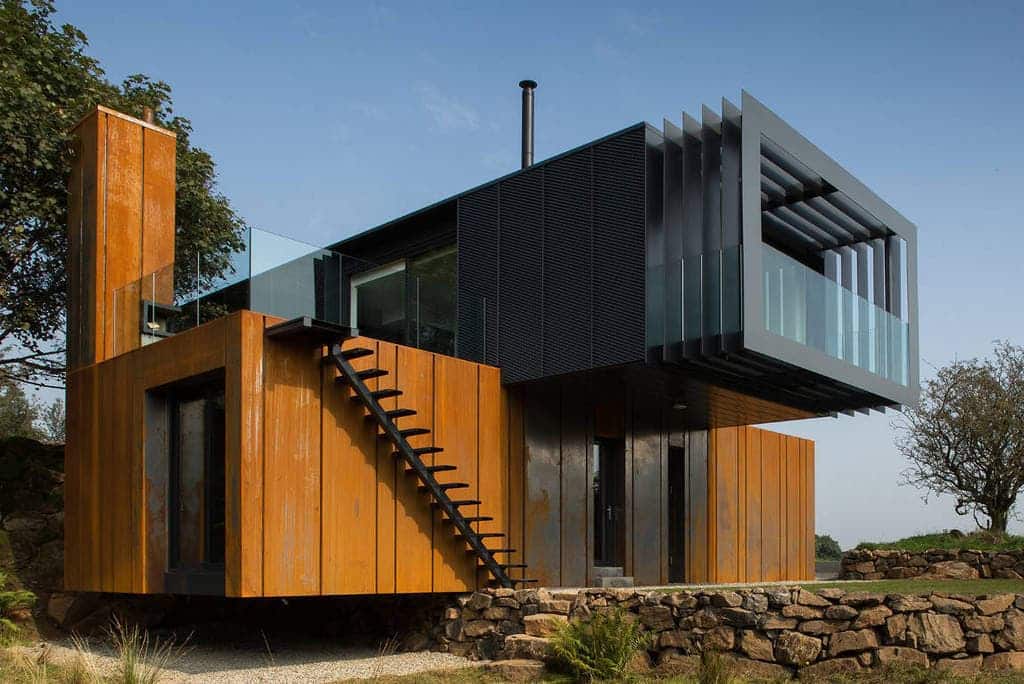How Much Do Shipping Container Homes Cost?
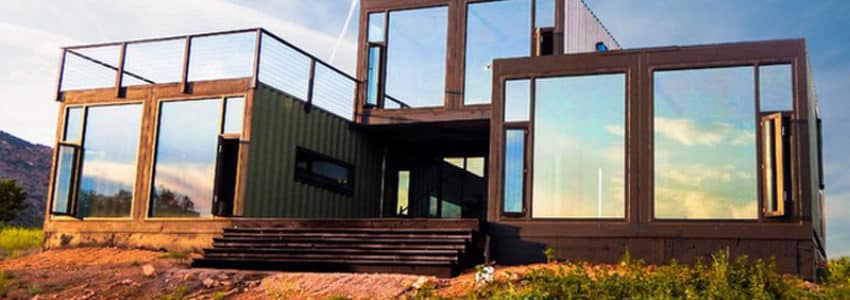
If you thought shipping containers were only good for moving cargo, think again. When these steel boxes arrive at ports in the U.S., they get used and then forgotten. Some are shipped back to Asia, but most sit idle in the ports taking up valuable space.
Architects are finding new and creative ways to transform these containers into living spaces, from studios to guest rooms and even single-family homes.
Highly durable and resistant to the woes that plague stick-built homes, shipping container homes are an incredibly attractive option for budget-conscious homeowners.
But just how much will you save with a container home?
How Much Do Shipping Containers Cost?
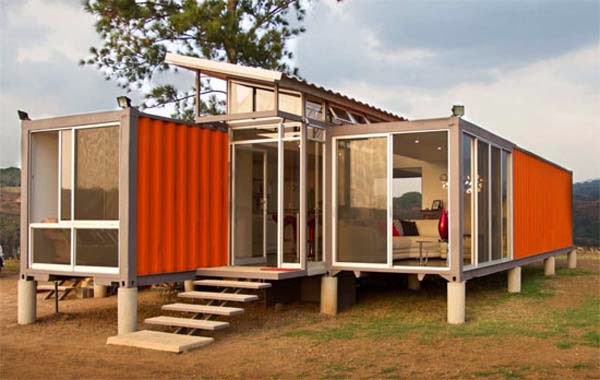
When calculating the cost of your container home, the first place to start is with the containers themselves.
The cost of each container will largely depend on its size and its condition. Newer containers cost more, but will last longer and usually have fewer issues when building. Used and older containers are usually more affordable.
How much do containers cost, on average?
About $2,000 if you buy used. But that’s just a ballpark estimate.
- Some estimates are as high as $199,000 for six factory-modified containers.
- Large 40′ shipping containers are estimated to cost about $6,000 for a new model and $3,000-$4,000 for a used one.
The actual costs will vary greatly, but most people agree that you’ll spend between $2,000 and $5,000 per container.
If you plan to build a small home, one container may be all that you need, but most people use between four and six. This range of containers wil give you plenty of space and ceiling height, so you don’t feel cramped in your home.
Shipping Container Types
There are two main types of shipping containers: regular and high cube.
Regular containers are the most common type used in freight shipments, so it’s very easy to find used ones. They’re cheaper, and they come in both 20′ and 40′ sizes.
High cube containers have higher ceilings (about one foot higher). The taller ceiling makes the container feel bigger, and provides a little extra vertical living space.
Shipping Container Homes Cost Breakdown
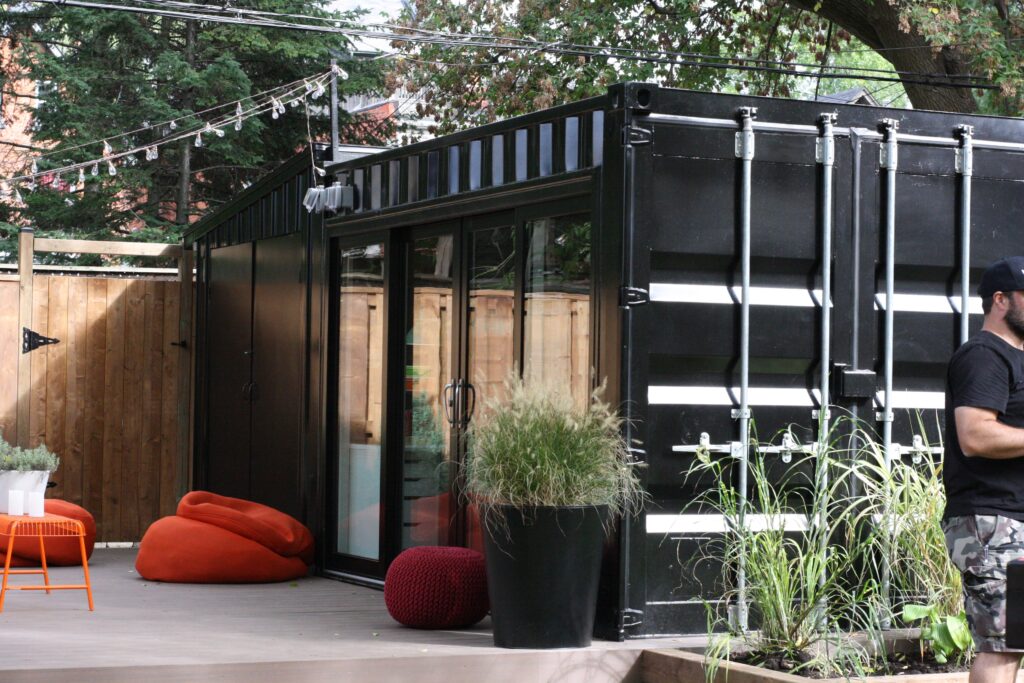
Before you get overly excited thinking you can own a new home for less than half the price of your car, it’s important to remember that there are other costs involved when building a container home.
Here’s a quick rundown of the other costs you’ll need to consider, and what they average:
- Plumbing: $7,000
- Site preparation: $10,000
- Assembly: $3,000
- HVAC: $7,000
- Electrical: $7,000
- Flooring: $5,000
- Insulation: $5,500
- Roofing: $3,000
- Doors and hardware: $2,000
- Shelves and closets: $2,000
- Finishes and painting: $6,000
- Windows: $4,000
Depending on whether you’re going with a DIY build or a professional installation, you may also need to consider the cost of shipping container home plans.
With most of the items on the list above, there isn’t much wiggle room to choose a more budget-friendly option. Plumbing is plumbing, and site preparation is site preparation.
But with things like insulation and foundation, you have a number of options to choose from. Some options are more budget-friendly than others.
While we can’t cover the options for every last detail of the home, we can take a closer look at these two important parts to give you a more realistic estimate of your container home’s cost.
Foundation
Foundation costs are an important thing to consider, and you have a few options here, too. The most popular foundation choices include slab, concrete pier and trench.
- Trench: About $5,200 for a large container
- Pier: About $500 for a large container
- Slab: About $6,000 for a large container
Slab foundations are the most costly option, and are generally only used when the ground is too soft for the other two types.
Insulation
Some people think they can skip the insulation stage to save money, but they quickly regret that decision.
Without insulation, living in your container home will feel like torture. It will feel like a sauna in the summer and an icebox in the winter.
Skipping this step may not be an option, but you do have options when it comes to the type of insulation you install.
The three most common types of insulation are spray foam, blanket and panel. There are other types, but these are the ones used most often.
- Spray foam: About $2 per square foot
- Blanket: About $0.45 per square foot
- Panel: About $1.20 per square foot
Panel insulation is the easiest type to install, and may be the ideal option if you’re going for a DIY install. The only problem with this type of insulation is that it requires you to install wooden battens, which will reduce the size of your living space.
Blanket insulation is the cheapest option, but it also requires wooden battens.
Spray foam is the most expensive option, but it’s still easy to install and seamless.
Take the time to weigh the pros and cons of each insulation type, so you can choose one that best fits your needs.
Land
One cost that isn’t on the list is land. You’ll need to purchase your own land, and there’s no way to estimate this cost. In some cases, the land may cost more (way more) than the actual container home. The cost to prepare the site can also vary greatly, depending on where you’re buying your property.
Altogether, just for the home, CNN estimates that a decent-sized container home will cost you about $184,000.
New vs. Used: What’s the Best Option?
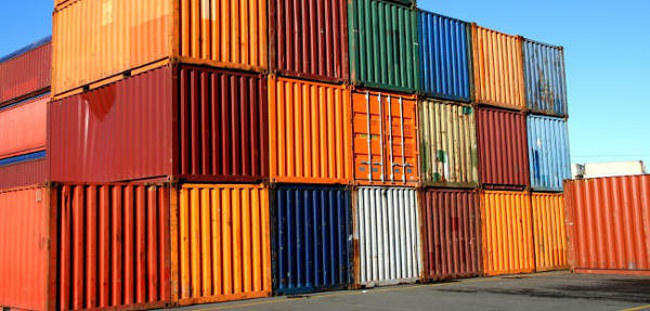
Now that you have a better understanding of the costs, you may be wondering whether it’s better to buy a new or used shipping container.
There are advantages and disadvantages to both.
New Shipping Containers
The first and most obvious benefit to a new shipping container is that it doesn’t have any signs of wear and will last for decades. New containers aren’t treated with chemicals to protect it from the elements, and they never carried any toxic items.
Another major benefit to buying new containers is that you can choose the size you want and the extra features you want.
Of course, there are also disadvantages to new shipping containers. For starters, they’re not an eco-friendly option. Because these are new containers, they’ll need to be manufactured. Used containers recycle old containers, which prevents waste.
One of the main disadvantages to a new model is that you’ll be paying a lot more for your containers. In many cases, new containers are double the cost of used containers.
Finally, the last disadvantage is that new containers can take a long time to ship because they are typically manufactured overseas.
Used Shipping Containers
Used shipping containers are the most budget-friendly option, and they’re also the most eco-friendly. Rather than wasting resources on producing new containers, you’re recycling existing ones.
Used containers are readily available, easy to find, and in some cases, may only take a few days to get to you.
There are also some obvious and serious disadvantages to choosing a used container. Some older containers may be rusted or damaged. They may be treated with harsh chemicals that can make it unhealthy to live in. This is a big concern of ours and something will be covered in-depth in the future.
You also don’t know what the container was shipping when it was in use. You never really know what you’re going to get when you buy a used container. That’s why it’s so important to see it in person before you buy, or in the very least, get very detailed pictures of the container if you’re ordering online.
Size Recommendations: What’s Best for Your Needs?
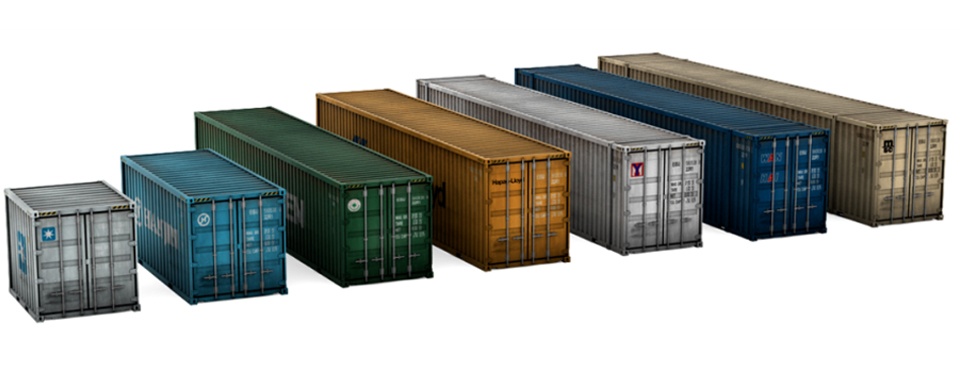
Shipping containers come in a few different sizes. Which one should you choose?
That depends on how much living space you want and how many people will be living in the home.
The two most popular sizes for container homes are:
- 20′: 8′ wide and 8′ tall. These equal about 160 square feet.
- 40′: 8′ wide and 8′ tall. These equal about 320 square feet.
Shipping containers come in other sizes as well, but they’re typically too big or small for home use.
Now, if you’re looking for a tiny home, just one of these containers is all you need. But most people choose to combine multiple containers to create a larger home. The containers can be stacked or combined in any number of ways, and you can mix these two popular sizes (20′ and 40′) when building your home. Our personal belief is to use the larger 40′ for your main living quarters and add additional 20′ sections for bedrooms, offices, etc…
When deciding which size container home is right for you, you’ll need to calculate the total square footage you’ll need, and then determine how many containers you’ll need.
Here is one of our favorites from the TV show Grand Designs and features the home and work of architect Patrick Bradley.
